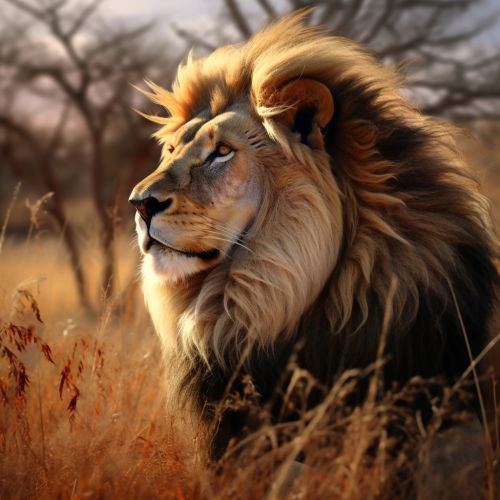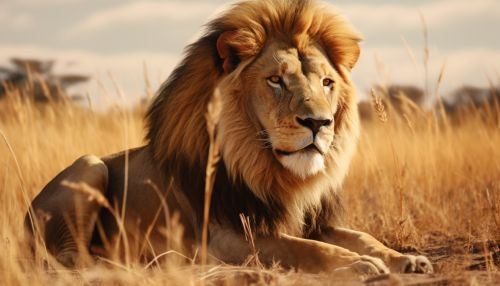Lion
Introduction
The lion (Panthera leo) is a species in the family Felidae and a member of the genus Panthera. It has a muscular, deep-chested body, short, rounded head, round ears, and a hairy tuft at the end of its tail. It is sexually dimorphic; adult male lions have a prominent mane. With a typical head-to-body length of 184–208 cm they are larger than females at 160–184 cm. It is a social species, forming groups called prides. A lion pride consists of a few adult males, related females and cubs.


Taxonomy and Evolution
The lion is one of the five big cats in the genus Panthera and a member of the family Felidae. The commonly used term African lion collectively denotes the several subspecies in Africa. With some males exceeding 250 kg in weight, it is the second-largest living cat after the tiger. Wild lions currently exist in sub-Saharan Africa and in India (where an endangered remnant population resides in and around the Gir Forest National Park).
Characteristics
Lions are the most socially inclined of all wild felids, most of which remain quite solitary in nature. The lion is a predatory carnivore with two types of social organization. Some lions are residents, living in groups, called prides. The pride usually consists of five or six related females, their cubs of both sexes, and one or two males (known as a coalition if more than one) who mate with the adult females. Other lions, known as nomads, range widely and move about sporadically, either in pairs or alone.
Behavior and Ecology
Lions spend much of their time resting; they are inactive for about 20 hours per day. Although lions can be active at any time, their activity generally peaks after dusk with a period of socializing, grooming, and defecating. Intermittent bursts of activity follow through the night hours until dawn, when hunting most often takes place. They spend an average of two hours a day walking and 50 minutes eating.
Reproduction and Life Cycle
Lionesses are polyestrous, breeding throughout the year. An estrous lioness mates with the male of her choice, but all of the adult males in the pride may mate with her. The average gestation period is around 110 days; the female gives birth to a litter of one to four cubs in a secluded den, which may be a thicket, a reed-bed, a cave, or some other sheltered area, usually away from the pride.
Interaction with Humans
In the past, lions were admired across the globe and their courage and strength were seen as a sign of nobility and prowess. Today, they are often the main attractions in zoos and animal parks, but human interaction has proven to be both beneficial and detrimental to this species.
Conservation
The lion population in Africa has been reduced by half since the early 1950s. Today, fewer than 21,000 remain in all of Africa. The species is internationally listed as vulnerable and is listed as endangered under the U.S. Endangered Species Act. The main causes of this decline include habitat loss and conflicts with humans.
